Harbinger of Eternal Daylight
FAIRBANKS, ALASKA– The snow only just melted in interior Alaska last week. Signs of spring abound here: the sky is light for almost twenty hours a day, leaf buds are nearly bursting on the trees in the endless boreal forest, and an array of birds migrate north in the morning sky. Atop pick-up trucks, the dog boxes used by mushers are gone and have been replaced with canoe racks. Yesterday, I ran on the university trails sans snowshoes for the first time since last autumn. Indeed, the brief Arctic summer will soon be upon us. However, as I write in the comfort of my office at the University of Alaska in Fairbanks, my thoughts of the upcoming field season are largely abstract.
This will be the eighth year I return to study tundra plants in Arctic Alaska. This season, I will work with a field crew at the Toolik Field Station. We will conduct a survey of long-term vegetation plots established by my mentors Drs. Skip and Marilyn Walker in the late-1980s and early-1990s in collaboration with the International Tundra Experiment– or ITEX– project.
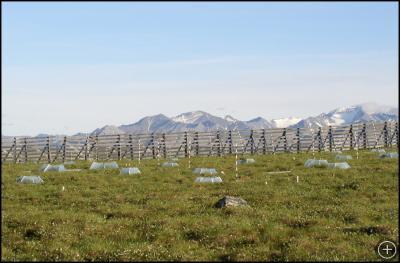
Our field experiment. The snowfence allows snow to accumulate in the winter at our study site and the open-top chambers act as greenhouses to warm the tundra 1-3°C higher than normal. The Brooks Range to the south is visible in the background.
As I have been involved with this project since 2001, my outlook for the field season is from the perspective of an old hand. To accomplish our experimental objectives, I have the knowledge and expertise gleaned from seven years of field work. Despite this, my excitement and anticipation to return to the Arctic has not waned.
Honestly, I am happiest and at my best immersed within the arctic landscape. This ecosystem has bewitched me, and in turn I have fallen deeply and truly for the vast beauty and allure of endless rolling arctic tundra.
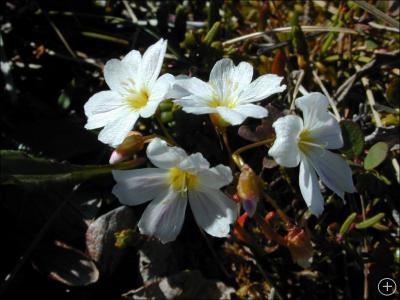
Claytoniella bostockii (Portulacaceae). While found in the tundra surrounding Toolik Lake, this charming diminutive wildflower is rarely encountered in far-northwestern North America.
Next week, another harbinger of spring will take place, and with it will come the promise of the eternal daylight of the arctic summer: My field partner and friend, Joel, will arrive in Fairbanks. He will be coming from Puerto Rico where he is a graduate student with our project leader, Dr. Bill Gould. Joel will participate in an Arctic Field Ecology course at the University of Alaska prior to our beginning fieldwork in late June. His arrival will help my view of the pending field season transition from abstract to concrete and tangible. Ready or not, summer is almost here.


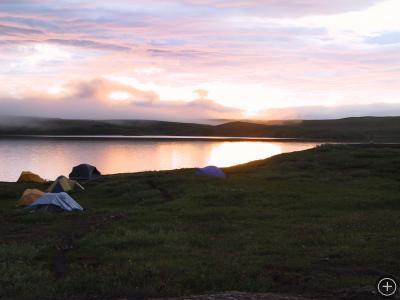
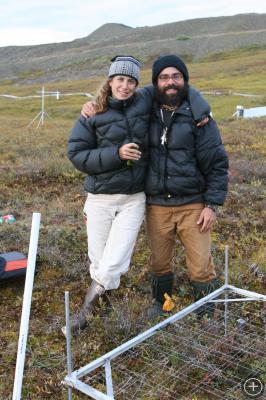

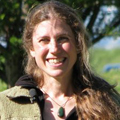

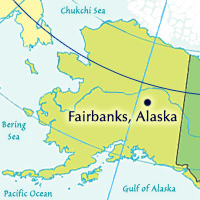





Amy Breen Carroll,
I sure hope your International Tundra Experiment is going well? God bless you and all the wonderful work you do. Your site is real good and covers a lot. Please keep up all the good work.
Stay safe.
Robert E. Sigler
robertsiglerengineer@yahoo.com